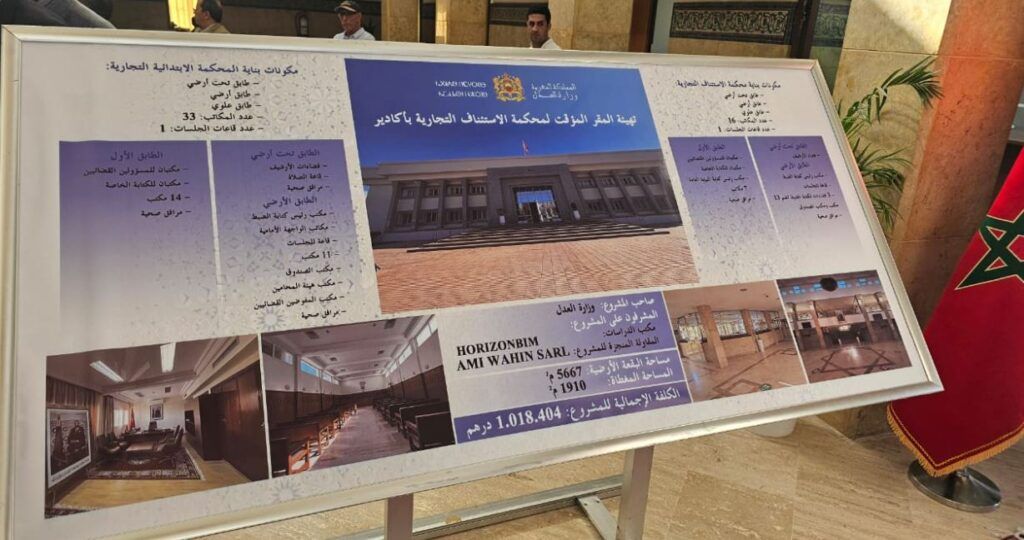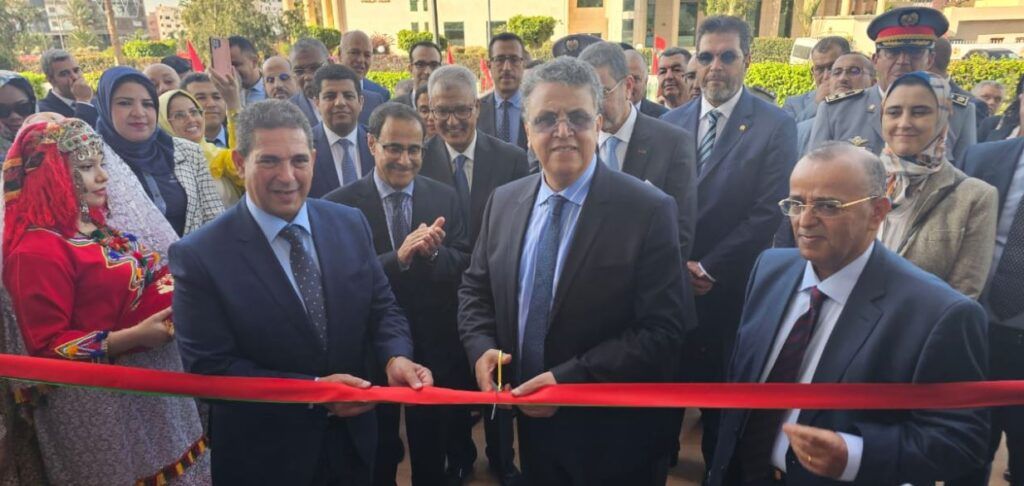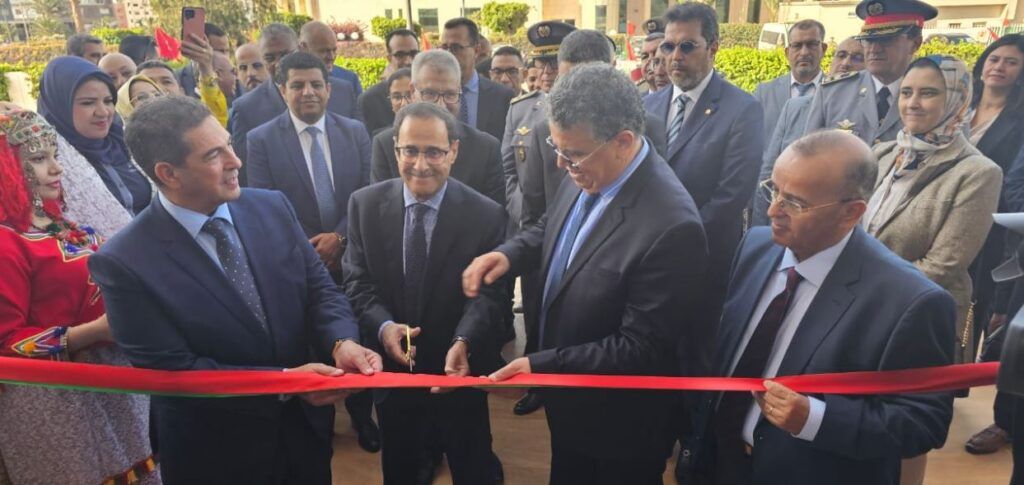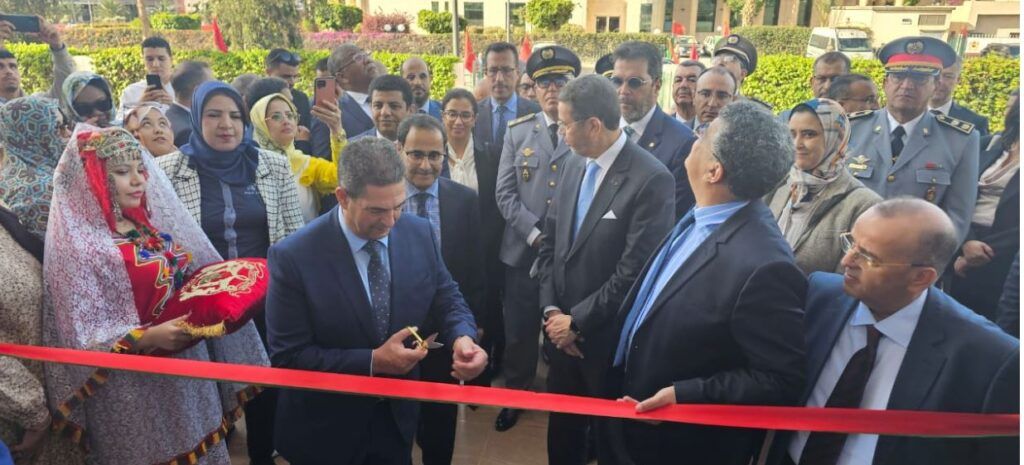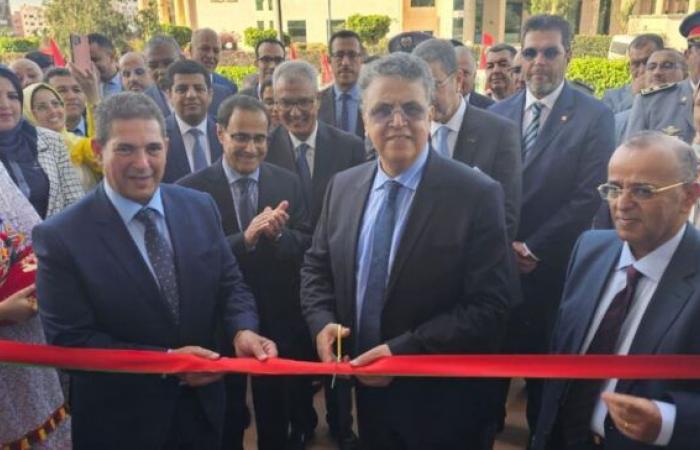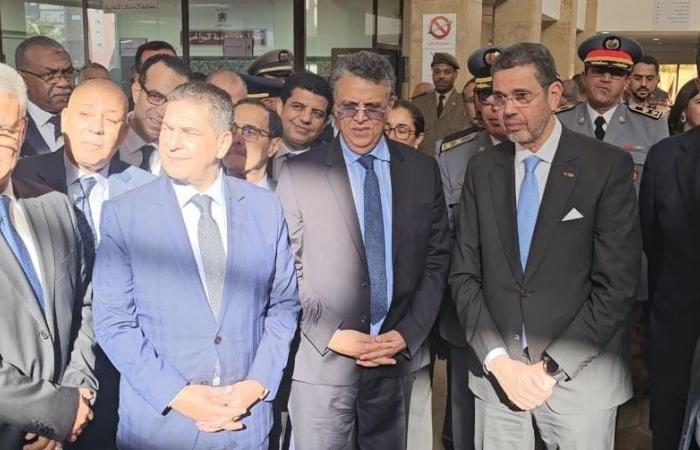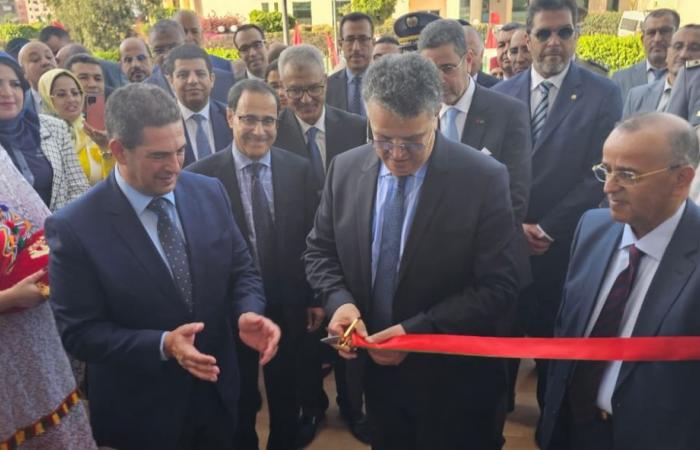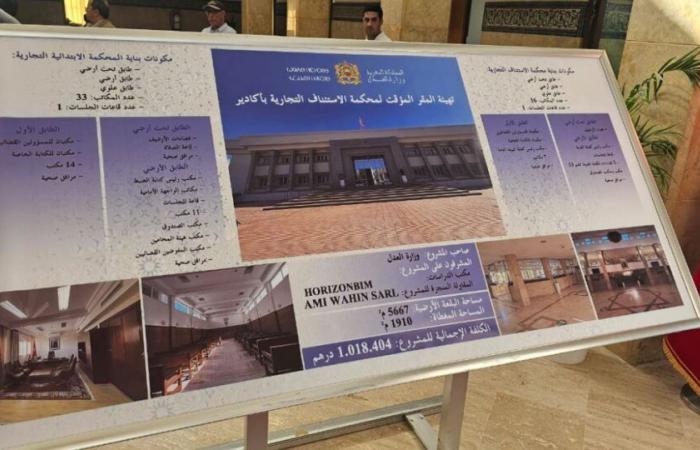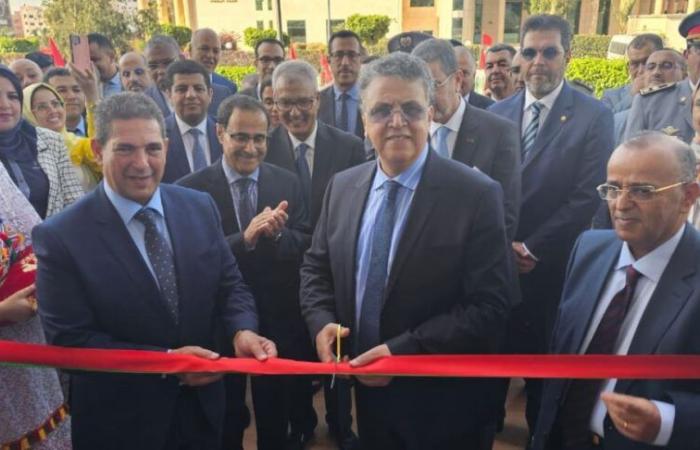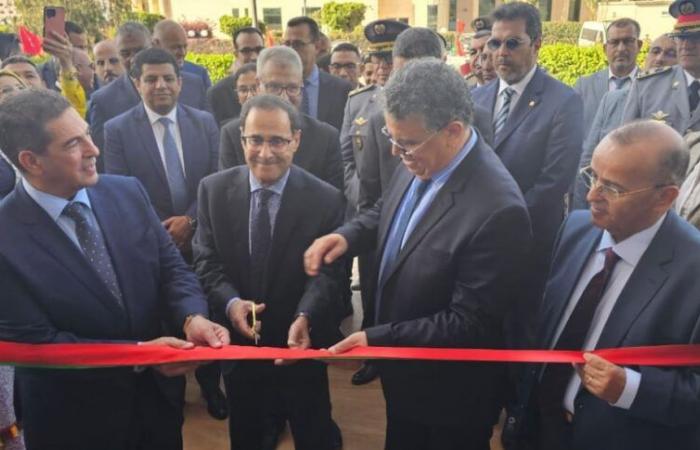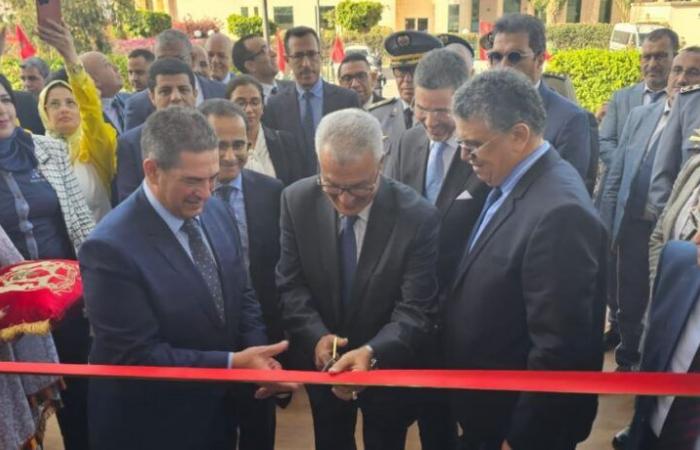Within the framework of the continuous efforts made by the Ministry of Justice to modernize and develop justice facilities, and to complete its ambitious program to improve the condition of the Kingdom’s court buildings and enhance the infrastructure of the justice system in various judicial departments, in order to achieve the principle of bringing the judiciary closer to citizens and improving the quality of services provided to them, the Minister of Justice, Mr. Abdul Latif, Wehbe, accompanied by Mr. Mohamed Abdel Nabawi, President-Delegate of the Supreme Judicial Council, today, Thursday, November 7, 2024, inaugurated:
The temporary headquarters of the Administrative Court of Appeal in Agadir, which was built on a total area of 3,426 square meters and at a total cost of 333,780 dirhams;
The temporary headquarters of the Commercial Court of Appeal in Agadir, which was built on a total area estimated at 5,667 square meters and at a total cost estimated at 1,018,404 dirhams;
The headquarters of the Court of First Instance and the Family Justice Department in Bucre, which was built on a total area estimated at 9,500 square meters and at a total cost estimated at 77,567,239 dirhams.
These new judicial buildings were constructed with authentic Moroccan architectural specifications and modern, contemporary designs at the same time, in terms of equipment for accessing judicial information and electronic panels that include data on popular files and judicial activity of the court, which will lead to reducing the pressure on its employees, improving judicial services and facilitating access. Users and litigants to information.
The Minister highlighted that “these efforts fall within the framework of bringing judicial services and institutions closer to citizens and various stakeholders, responding to the tremendous development that the region is experiencing at the developmental, economic and social levels, and keeping pace with the qualitative boom that the region is experiencing, which constitutes a model for the civilizational development of the Kingdom of Morocco.”
This event was attended by a number of prominent figures, including judicial officials, the governor of the region, representatives of territorial communities, public authorities and administrations, in addition to civil society activities.
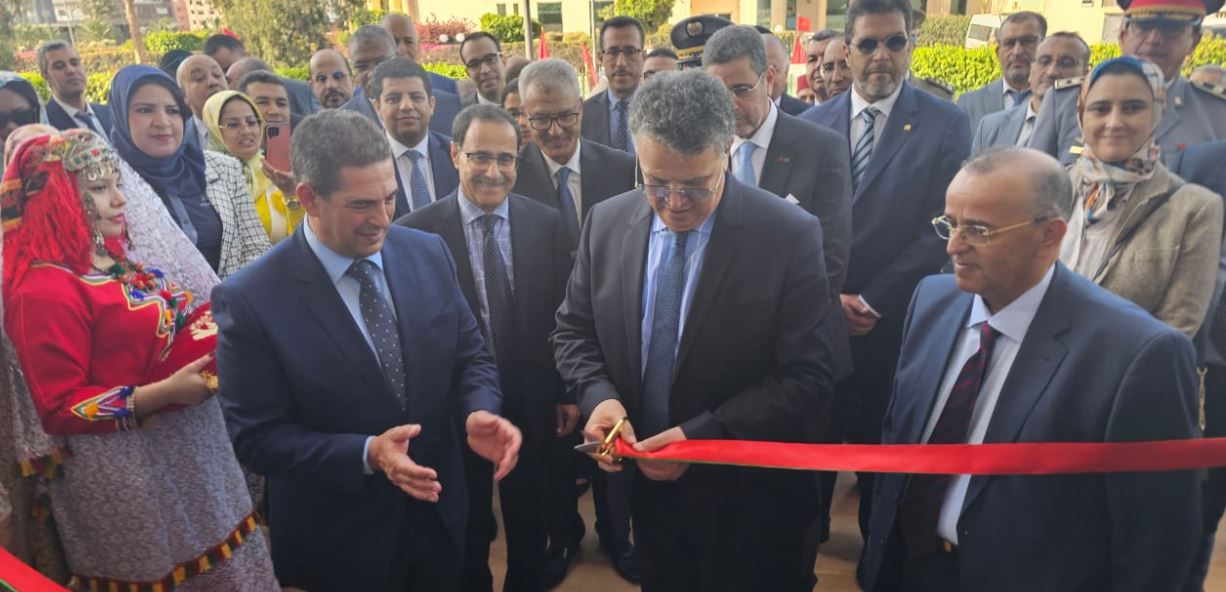
The occasion was an opportunity to review the services provided by these new facilities, which aim to enhance the efficiency of the judicial system and ensure the provision of high-quality services to citizens, by providing advanced infrastructure that keeps pace with technological developments and meets the needs of modern justice, which contributes to improving the working conditions in which justice employees work. Chief among them are judges, court clerks, and those affiliated with the judicial and legal professions, while providing a suitable environment for citizens to obtain their rights with ease and convenience.
